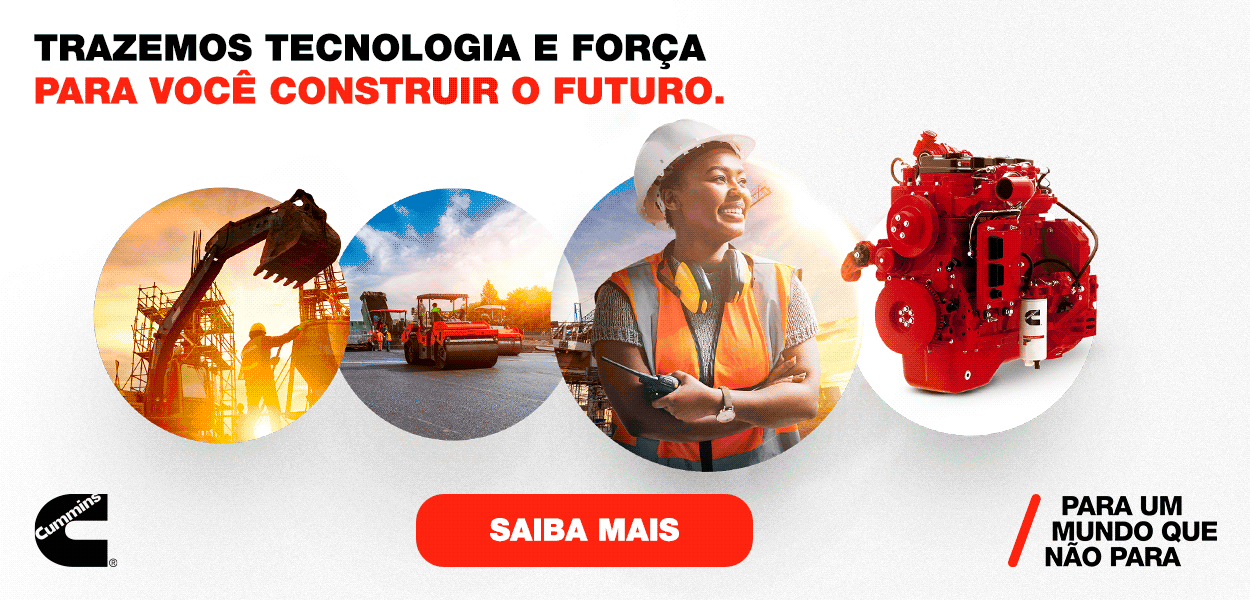National preference
In spite of a clear and growing trend of using more compact models, the population that uses solutions in the 20-ton range continues to increase in Brazil
The Brazilian market of hydraulic excavators is passing by a process of maturing. There is currently a strong capillarity of this equipment in different areas of infrastructure, opening niches for more compact and light models. In large urban centers such as São Paulo, for example, the increasing trend involves the use of machines with lower operating weight due to the conditions of accessibility.
Rental companies prefer to work with models between 13 and 25 t because these machines are cheaper, more versatile, with lower idle time and easy to be sold in the market of used equipment. Thus, the chance of using models from this range is much higher than that of using a 50-t excavator.
According to Edimilson de Oliveira Sabino, director from Capacitar Operadores, the models below 17 t are stealing the show. “Although having lower capacity, they are machines that may be used in the market of smaller motions”, exemplifies him. “This means that an excavator in the range of 8 t may work in jobs such as pipe installation, ditch excavation and foundations.”
Vice-president of Sobratema and superintendent of equipment procuring from Odebrecht, Paulo Oscar Auler Neto thinks that the large quantity of 20-t excavators in the market results from a policy based on the return on investment. “These machines are more versatile, and thus have lower idleness”, says him. “They work more and have higher time of amortization. This means a guarantee of return for the rental company.”
For the final user, however, the calculation is different. “The client needs the right equipment for the application”, points Auler Neto. “If it is not available for rental, he will have to buy it, even considering the possibility of having the equipment idle at the end of the works.”
PARTICIPATION
Excavators from the 20-t range are the most sold in the national market. But if we divide this range into 20-21 t and 21-24 t, there is a trend of increasing the participation of machines above 22 t. “The market is selecting this range because it is tougher, with high mechanical and hydraulic efficiency”, explains Rafael Ricciardi, expert of product marketing from New Holland Construction.
According to him, there was a clear change in the manufacturers’ behavior from 2008 on, caused by the demand of the market. But in 2014, Ricciardi noticed an inversion in the participation of machines from 22 to 24 t, that overcame those of 20 t due to their decline in the market and the facilities for buying equipment of higher capacity. “Currently, excavators from 20 to 24 t have a share of 60 percent of the Brazilian fleet”, estimates Edson Greggio, general manager from Automec.
This percent shows that the models belonging to this operational range may carry out the most requested works of a project. “The models of 14 t have a share of 13 percent and those of 17 and 18 t have a share of 10 percent”, calculates him. This large population of machines in the range of 20 t is caused by their buying price, capacity of material handling, excavation force and easiness of transport. “It may be transported on a two-axle platform that matches the dimensional regulations related”, adds Greggio.
For Trazilbio Neres Filho, product expert from Case CE, the market of excavators is promising, due to its competitiveness and to new applications. In fact, they are the machines that fit better the large quantity of tools available, what results in an increasing demand. “According to the same logic, other ranges are increasing considerably their market share, competing with machines that were exclusive in some applications, such as 13-t excavators in place of backhoes”, analyzes him.
In the expert’s point of view, all ranges of weight are similar but 20-t machines carry out part of the works of lower and higher-capacity excavators because they are in the intermediate range. “Due to their use in operations formerly carried out only by loaders, crawler tractors and motor graders, there is this acknowledgement of their versatility and flexibility”, confirms Neres Filho.
CATEGORIES
The most significant differences of a 20-t machine in comparison with a 30-t machine are in the length of the boom and stick, breakout force, capacity and fuel consumption. Due to its higher operating cost, heavier models are not recommended normally for general services.
Excavators in the ranges between 30 and 55 t, for example, are used in operations that require higher production, mainly those above 45 t, that have good performance in soil and rock works. They have a perfect “marriage” with 16-cu.mt. dump trucks, widely used in large projects. These excavators are present in works of dams, roads and infrastructure and are scarcely sold in the market of used machines.
But the models above 55 t are used in larger works such as hydroelectric plants, mining and quarries. “They are not usually available in the market of rental, unless when they are previously negotiated with guarantee of use in periods above 18 or 24 months”, explains Auler Neto. “But the company needs a long-term project to invest in equipment of this size, since these machines are difficult to sell when used, even with low total of hours.”
In his point of view, the operating range of 20 to 25 t is quite similar but cannot be considered an evolution of models. The market is enlarging at maximum the range of options, allowing users to select the ideal equipment for each operation. “This is a strategy of market to offer more alternatives to the users”, says him. “Excavators of 20 t go strongly in their niche of application.”
At this point, Neres Filho considers that the growing use of 25-t excavators is a clear sign that the market is improving equipment selection in accordance with the requirements of the application. “Generally, these models share several components with 20-t excavators but they have a stronger structure or a special attachment to match with a specific application”, ends him.

Av. Francisco Matarazzo, 404 Cj. 701/703 Água Branca - CEP 05001-000 São Paulo/SP
Telefone (11) 3662-4159
© Sobratema. A reprodução do conteúdo total ou parcial é autorizada, desde que citada a fonte. Política de privacidade














